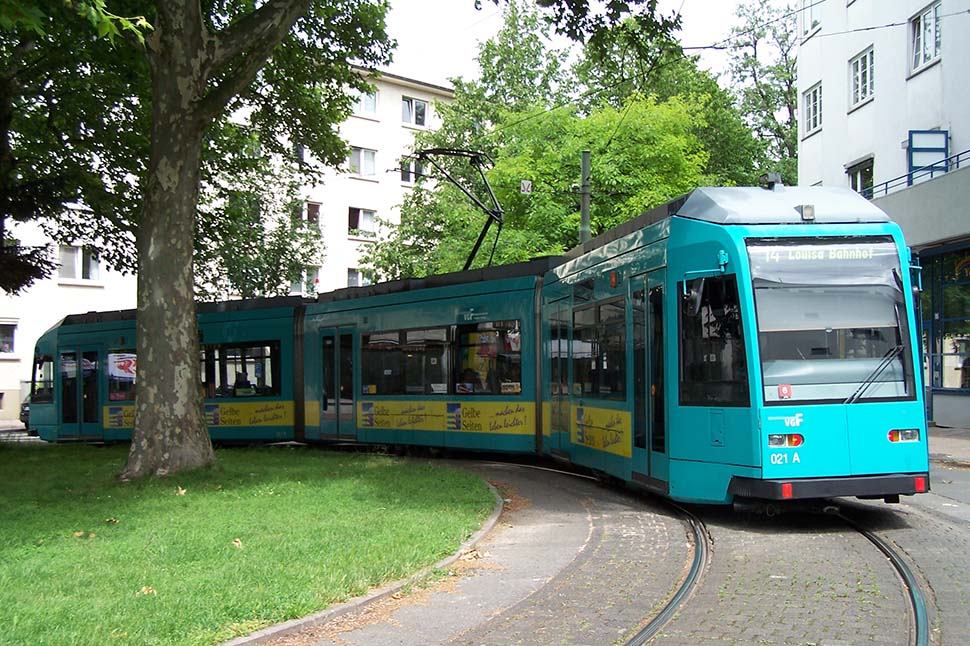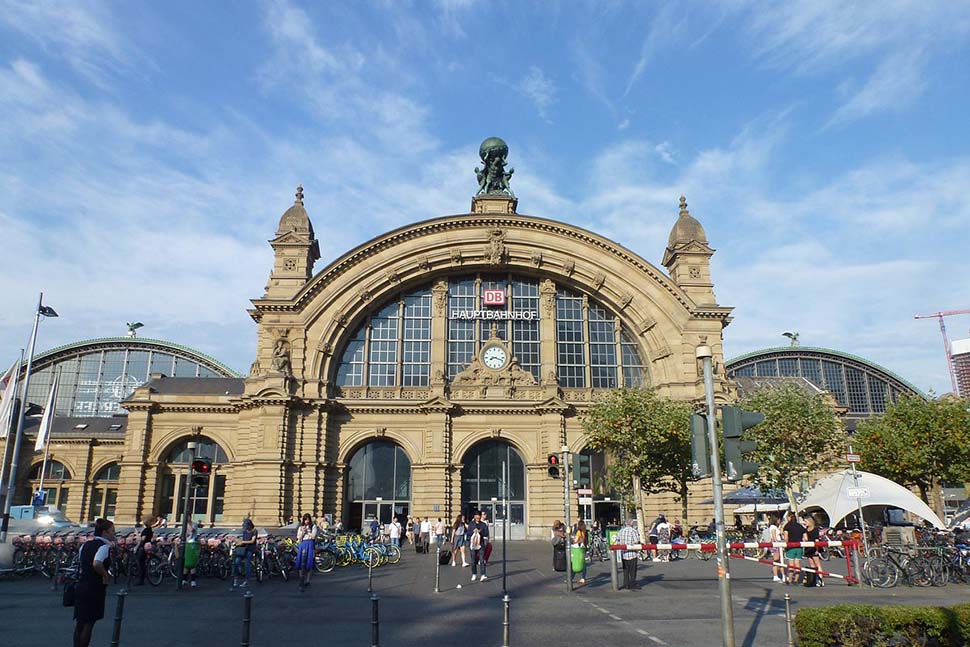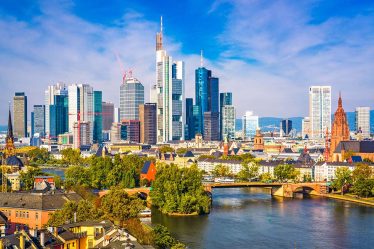
Frankfurt, Germany’s financial powerhouse, is known for its impressive skyline, cultural diversity, and vibrant urban life. But when it comes to navigating the city, whether you’re visiting for business or leisure, mastering Frankfurt’s public transport system is essential. Fortunately, the city has an extensive, efficient, and well-connected network of buses, trains, and trams that make getting around a breeze.
Frankfurt’s Public Transport System
Frankfurt’s public transportation system is managed by the Rhein-Main-Verkehrsverbund (RMV), which operates buses, trams, S-Bahn trains (suburban trains), U-Bahn trains (underground metro), and regional trains. With RMV’s unified ticketing system, passengers can seamlessly switch between various modes of transportation using a single ticket, making travel convenient and easy.
The system is known for being punctual and reliable, with extensive coverage throughout the city and its surrounding areas. Whether you’re headed to the bustling Frankfurt Hauptbahnhof (main train station), the airport, or one of the city’s many attractions, public transport is the best way to avoid traffic and parking challenges while ensuring a smooth journey.
Frankfurt’s Ticketing System
Before diving into the specifics of buses, trains, and trams, it’s essential to understand the ticketing options available for Frankfurt’s public transport. The RMV system uses zone-based pricing, with tickets valid for various time periods and covering multiple travel zones.

Types of Tickets:
- Single Ticket: Valid for one journey within the selected fare zones. This ticket allows for transfers but must be completed within a set time limit (usually 1-2 hours).
- Day Ticket (Tageskarte): This is perfect for travelers who plan to make multiple trips in one day. The day ticket provides unlimited travel within the selected fare zones for the entire day.
- Group Day Ticket: Ideal for groups of up to five people, this ticket offers unlimited travel for all members within the fare zones, making it an economical choice for families or groups of friends.
- Weekly and Monthly Tickets: For extended stays or daily commuting, these tickets offer significant savings compared to buying individual tickets each day.
- Frankfurt Card: Tourists can benefit from the Frankfurt Card, which offers unlimited travel within the city (zones 50 and 5090) along with discounts to many of Frankfurt’s museums, attractions, and tours. It’s available for one or two days, making it a great option for visitors.
Where to Buy Tickets:
- Ticket Machines: Found at all U-Bahn, S-Bahn, and tram stops, ticket machines are the most common way to purchase tickets. These machines offer language options, including English, and accept both cash and credit cards.
- Mobile App: RMV also offers a user-friendly mobile app where you can purchase and validate your tickets on the go.
- Ticket Counters: Available at major stations like Frankfurt Hauptbahnhof and Frankfurt Flughafen (the airport), you can buy tickets directly from an RMV counter.
Always remember to validate your ticket before boarding (especially with single tickets). Failure to do so can result in hefty fines if caught without a valid ticket by inspectors.
Buses in Frankfurt
Frankfurt’s buses are an essential part of the public transport system, especially for reaching neighborhoods that are not directly serviced by trains or trams. Buses are reliable, and while not as fast as trains, they are particularly helpful for short-distance travel or when connecting between train stations.
Key Bus Routes:
- Bus 64: This bus connects the Frankfurt Hauptbahnhof with the popular tourist destination of Palmengarten, Frankfurt’s beautiful botanical garden. It’s a convenient way to travel from the city center to the green heart of the city.
- Bus 61: This route links Frankfurt Airport (FRA) with the nearby neighborhoods of Oberrad and Sachsenhausen, making it a helpful option for travelers needing to reach the southern districts after flying in.
- Night Buses: For those staying out late, Frankfurt’s night buses (Nachtbus) are a lifesaver. These buses operate between 1 AM and 4 AM on weekends and ensure that the city stays connected even after the regular trains and trams have stopped.
Using the Bus:
Buses generally run from early morning until late at night, with detailed schedules posted at each stop. You can also check live departure times using the RMV mobile app or Google Maps.
To board, enter through the front door, show your ticket to the driver, and find a seat or hold onto a handle. Unlike trains, buses require you to press the stop button to signal the driver when your stop is approaching.
Trams in Frankfurt
Frankfurt’s tram system is not only one of the oldest in Europe but also one of the most extensive, providing a scenic and practical way to explore the city. Trams are popular for both short trips and sightseeing, as they pass through some of Frankfurt’s most iconic streets and neighborhoods.

Key Tram Routes:
- Tram 11: One of the longest tram lines, Tram 11 runs from the Schießhüttenstraße in the east to Zuckschwerdtstraße in the west, passing through the bustling Konstablerwache and the beautiful Römerberg square.
- Tram 12: This tram offers access to Zeil, Frankfurt’s major shopping street, and ends at the Riederwald district, a quieter residential area.
- Tram 21: For those visiting the Frankfurt Trade Fair (Messe Frankfurt), Tram 21 provides easy access from the central station to the exhibition grounds.
Using the Tram:
Like buses, trams in Frankfurt run on a frequent schedule, with trams arriving every 5-10 minutes during peak hours. Stops are clearly marked, and trams are a preferred choice for inner-city travel due to their efficiency and dedicated tracks.
One of my favorite things about using the tram is that many of the routes take you past historical sites and through picturesque parts of the city, giving you a mini-tour of Frankfurt along the way. Plus, they’re an easy and relaxing way to get around, especially if you’re not in a rush.
S-Bahn and U-Bahn Trains
When it comes to speed and coverage, Frankfurt’s S-Bahn and U-Bahn networks are the most efficient ways to travel across the city and beyond. While the S-Bahn primarily connects suburban areas to the city center, the U-Bahn is an underground metro system that services key districts within Frankfurt.
S-Bahn (Suburban Trains):
The S-Bahn trains are ideal for travelers who need to cover longer distances quickly. There are nine lines in total (S1-S9), and these trains connect the city center with suburbs like Offenbach and Wiesbaden.
- S8/S9 Lines: These two lines are particularly important for visitors, as they connect Frankfurt Airport with Frankfurt Hauptbahnhof and the city center. It’s the quickest and most affordable way to travel between the airport and downtown Frankfurt.
- S6 Line: If you’re planning to visit the charming town of Bad Vilbel, known for its thermal baths and green spaces, the S6 line will get you there in about 20 minutes from central Frankfurt.
U-Bahn (Metro Trains):
Frankfurt’s U-Bahn is an extensive underground system consisting of nine lines (U1-U9). The U-Bahn is the go-to option for getting around the central and residential areas of Frankfurt.
- U4 Line: This line connects the central station to popular neighborhoods like Bockenheim and stops at Konstablerwache, one of the main shopping areas.
- U3 Line: If you’re planning to visit Frankfurt Zoo, the U3 line will take you there in no time.
- U7 Line: This is a great option for reaching the Enkheim area, which is perfect for those who enjoy nature and hiking trails.
The U-Bahn is especially helpful during rush hour, as it runs frequently and efficiently, even during peak times. Stations are easy to navigate, with clear signage in both German and English.
Navigating Frankfurt Hauptbahnhof
If you’re using any of Frankfurt’s public transport options, chances are you’ll find yourself at Frankfurt Hauptbahnhof at some point. As one of the busiest train stations in Europe, it can be overwhelming at first, but it’s designed to be user-friendly.

Here’s what you need to know:
- The station has three main levels: street level for trams and buses, the lower level for U-Bahn and S-Bahn trains, and platforms for regional and long-distance trains.
- There are plenty of ticket machines and RMV information points scattered throughout, so you can easily buy or check tickets.
- Luggage lockers are available if you need to store your bags while exploring the city.
Final Tips for Using Public Transport in Frankfurt
- Check Timetables: While trains, buses, and trams are frequent, it’s always good to check schedules, especially late at night or on weekends. The RMV app is extremely helpful for this.
- Mind the Zones: Frankfurt’s transport system is based on zones, so make sure your ticket covers the right zones for your trip.
- Keep Your Ticket: Ticket inspections are frequent, and being caught without a valid ticket results in hefty fines (60 euros).
- Peak Hours: Trains and buses can get crowded during rush hour (7-9 AM and 5-7 PM), so plan accordingly if you want a more comfortable ride.
- Night Travel: If you’re out late, check for night bus options or see if the S-Bahn or U-Bahn is still running. Frankfurt has excellent late-night coverage, but schedules can vary.
Frankfurt’s public transport system is one of the easiest and most efficient ways to explore the city and its surrounding regions. With a wide range of options including buses, trams, U-Bahn, and S-Bahn trains, you can confidently travel wherever you need to go.


